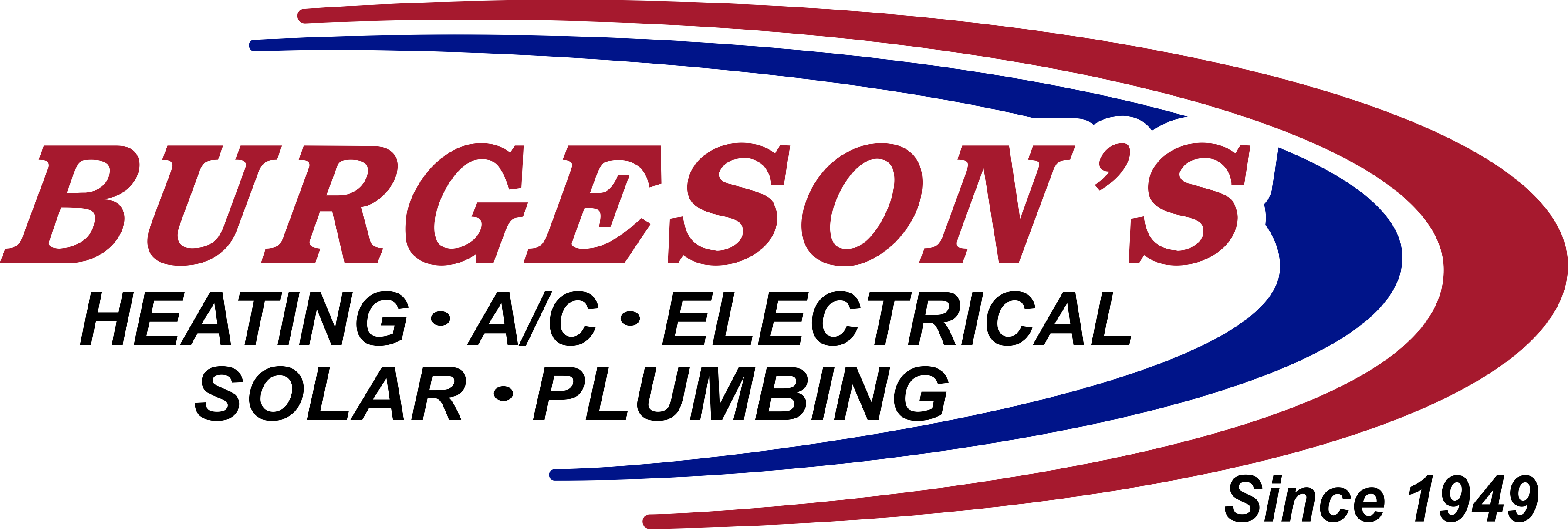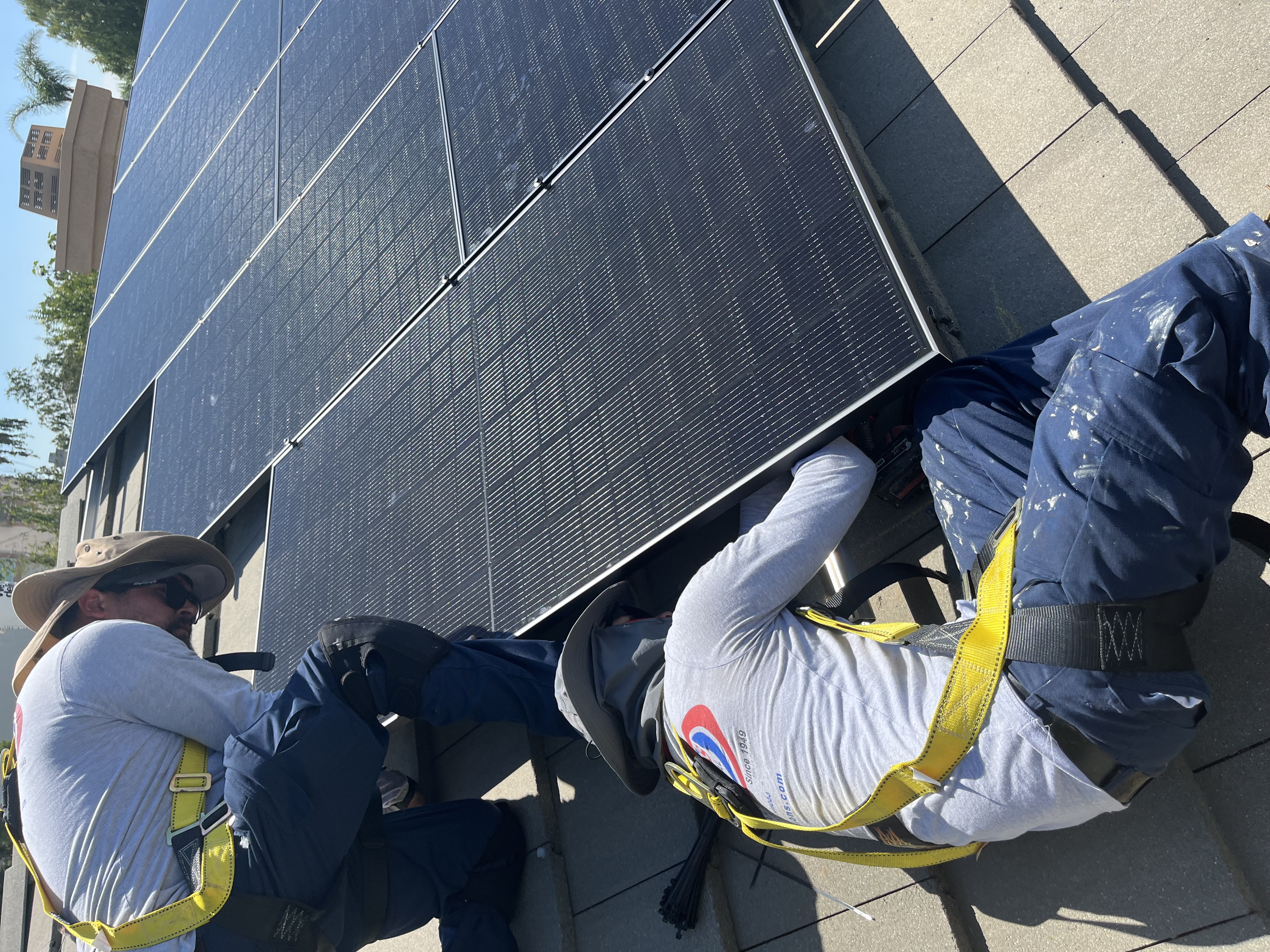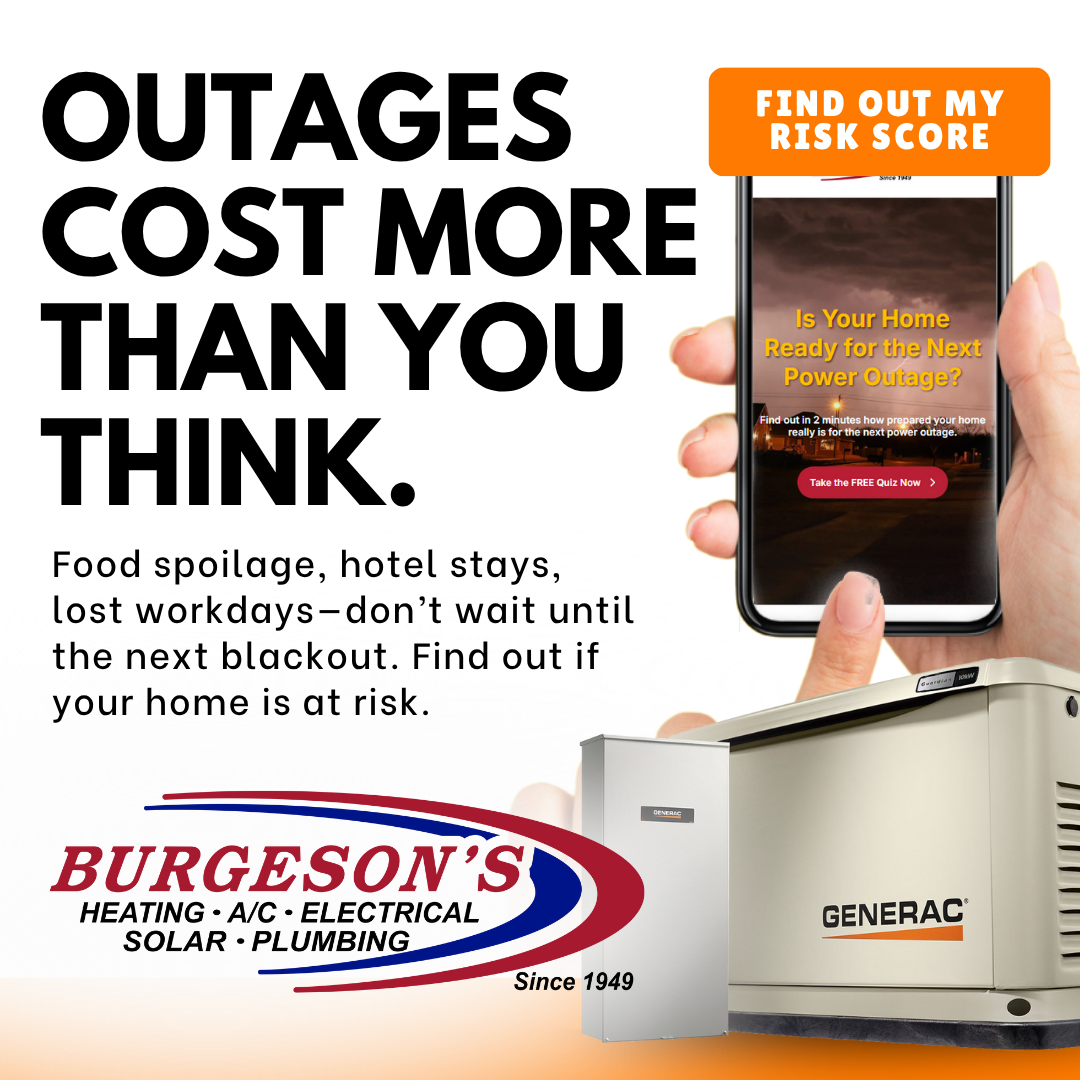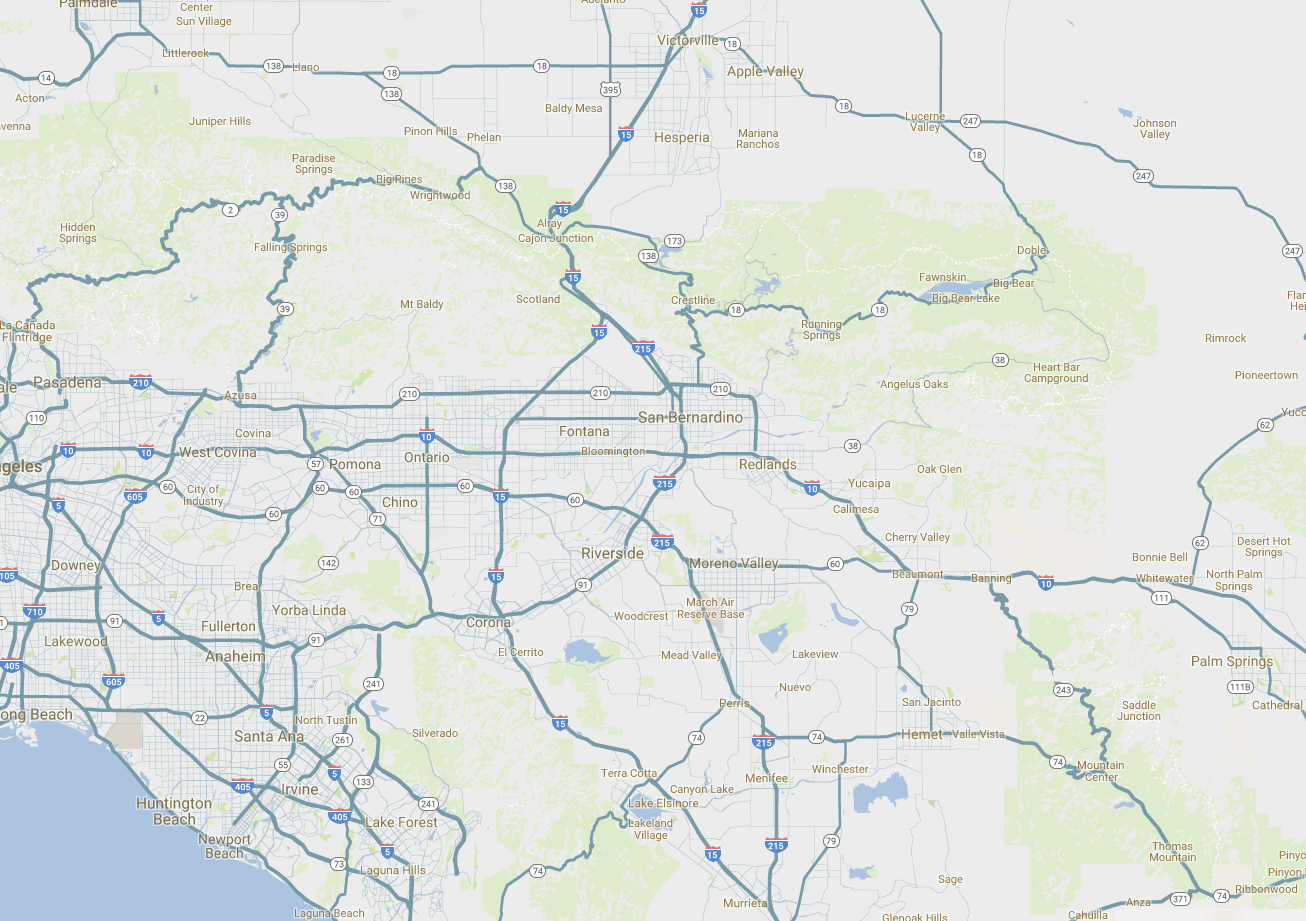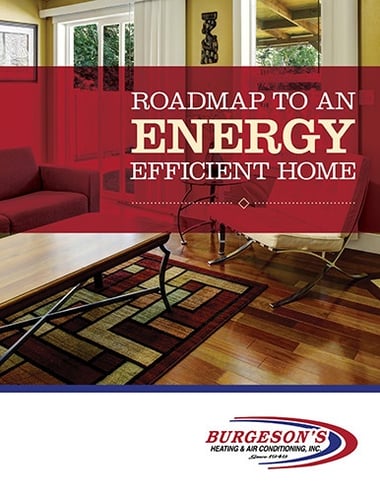Buyer's Guide: Cost of Solar Panels in California 2025
You’ve probably heard how solar energy can help you save money on your electric bill, but the cost of solar panels in California isn’t as widely talked about.
So, how much do solar panels cost for your Southern Californian home?
An average-sized solar panel system installation in the Inland Empire can range from $20,000 to $48,000 (before solar tax credits).
To truly understand the cost of solar panels in California, it’s important to note the different factors that will impact installation costs, such as:
1. System size: The amount of electricity you want or need to generate.
2. Equipment: The type of solar panels, inverter, and other components you choose.
3. Home characteristics: Roof angle, direction, and accessibility affect ease of installation.
4. Installation costs and labor: Covers the skilled work needed for system design, permitting, and installation.
5. Incentives and rebates: Federal and state programs (including the 30% tax credit that may end soon) can reduce costs.
6. Battery storage (optional): Adds cost but provides backup power and energy independence.
7. Permitting and inspection fees: Required local permits and inspections ensure your system meets safety standards.
In this article, we’ll explain these factors in detail, so you can decide whether or not a solar energy system is right for you.
Want our experienced and respectful electricians to help you make a decision? We’re happy to help. We give honest, helpful answers with the goal of improving the energy efficiency and functionality of your home.
1. System Size
The cost of solar panels in California depends on how much electricity you want to generate. Take a look at your electricity bill to see how many kilowatts (on average) your home uses each month.
A house that uses more electricity will need more solar panels. Also note, as the number of panels needed increases, so does the overall cost of solar panels in California.
A large system will require more equipment. And more equipment will require more labor to install a system. It takes a significant amount of manpower to make your solar dreams a reality. Keep in mind that designing your system, coordinating a site visit, filing your permits, installation, then activating the solar panels - all requires time and money.
Comparison of System Size, Cost, and Energy Coverage
|
|
|
|
|
|
3KW |
$9,000 - $13,500 |
$6,660 - $9,990 |
|
|
5KW |
$15,000 - $22,500 |
$11,100 - $16,650 |
|
|
7KW |
$21,000 - $31,500 |
$15,540 - $23,310 |
|
|
10KW |
$30,000 - $45,000 |
$22,200 - $33,300 |
|
2. Equipment
While the components of a solar system are simple, the various product options and brands can make the equipment selection process reasonably complex, especially when determining the overall cost.
In order to go solar, you’ll likely need the following equipment:
- Solar panels
- Inverter
- Racking
- Performance monitoring (optional)
- Storage option (battery or grid connection)
Overall, bigger, more popular brands cost more than their lesser-known counterparts. On the bright side, higher-quality equipment comes with benefits that may be worth the added cost. Better hardware can generate more electricity with the same amount of sunlight, and often comes with a more extensive warranty.
Having a reliable performance monitoring system is also important, as this piece of equipment records the hourly electricity production of your system. Select monitoring equipment tracks your system through the cloud, so you can monitor your energy levels in real-time conveniently from an app on your smartphone. But keep in mind, this type of equipment can raise the solar panel cost in California.
3. Home Characteristics
The characteristics of your home play a major role in your overall cost. The perfect position for a solar panel unit is on a south-facing, flat roof that doesn't have any obstructions like a chimney, vents, or antennas. East- and west-facing roofs are also good options because they get a lot of sunlight.
If your only available roof area for solar panels is north-facing, or if your roof is particularly difficult to install solar panels on - for example, your home is three stories high or has a roof with a 45° slope - then your solar system may cost more as you'll likely need more panels to generate enough electricity. Plus, the cost of labor will increase due to the added difficulty.
4. Installation Costs and Labor
When considering the cost of solar panels in California, it’s important to factor in the installation costs and labor involved. The installation of a solar panel system requires skilled professionals to ensure all components of the system are set up correctly and safely. The labor costs include designing your system, handling the logistics, and installing the panels.
Additionally, any specialized work, such as electrical panel upgrades or roof reinforcements, can add to the total cost.
It’s not just about the panels themselves—labor and installation are a significant portion of the overall investment. Labor can vary depending on your location, the complexity of the installation, and the size of your system, but it’s an essential part of the process.
5. Incentives and Rebates
California offers a variety of incentives and rebates to help reduce the solar panel cost in California. These programs can significantly lower your out-of-pocket expenses. The most well-known is the Investment Tax Credit (ITC), which can deduct up to 30% of your total installation costs.
Additionally, California offers local utility programs and state rebates that further reduce costs for homeowners. These incentives help to make the initial cost of solar panels in California more affordable and can lead to a quicker return on investment. It’s essential to check with your installer and local utilities to make sure you are receiving all eligible rebates, which can make a huge difference in your final solar panel price.
6. Battery Storage (Optional)
Adding battery storage to your solar system is an optional yet beneficial investment. A solar panel system without a battery may only supply power during daylight hours, but with the right battery storage, you can store excess energy for use at night or during power outages.
While this adds to the cost of solar panels in California, the added energy security and potential savings on your electric bill can make it worthwhile. Battery storage systems like the Tesla Powerwall, Enphase or EP Cube can integrate seamlessly with your solar setup. The cost of battery storage varies, but it’s important to consider it as part of your overall solar panel cost in California, especially if you live in an area with frequent power outages or want to maximize your energy independence.
7. Permitting & Inspection Fees
When installing solar panels, you will need to secure the proper permits from your local government and have inspections performed during and after the installation. These permitting & inspection fees are often overlooked when considering the cost of solar panels in California, but they can add to your overall investment.
Permitting costs depend on your location, and fees vary depending on the size and complexity of your system. In addition, you will need a final inspection to ensure everything meets local safety standards. While these fees can be an additional upfront cost, they’re necessary to ensure your system is properly installed and operating at peak efficiency.
When calculating how much do solar panels cost in California, it’s important to account for these additional expenses.
Don’t Forget to Consider the Long-term Savings with Solar
Larger solar power systems have a higher upfront cost but lead to greater savings. For example, a 10kW system may require more out-of-pocket investment but can significantly reduce your monthly utility bill, delivering substantial long-term savings.
In addition… $0-down, low-interest solar loans are becoming increasingly popular, making it even easier to get a solar panel system and boost your solar savings.
Get an Expert Opinion. Call Burgeson’s Today!
If you’re ready to explore your solar energy options, contact us today. You deserve to work with professionals who make your comfort a top priority with a legacy of reliability.
